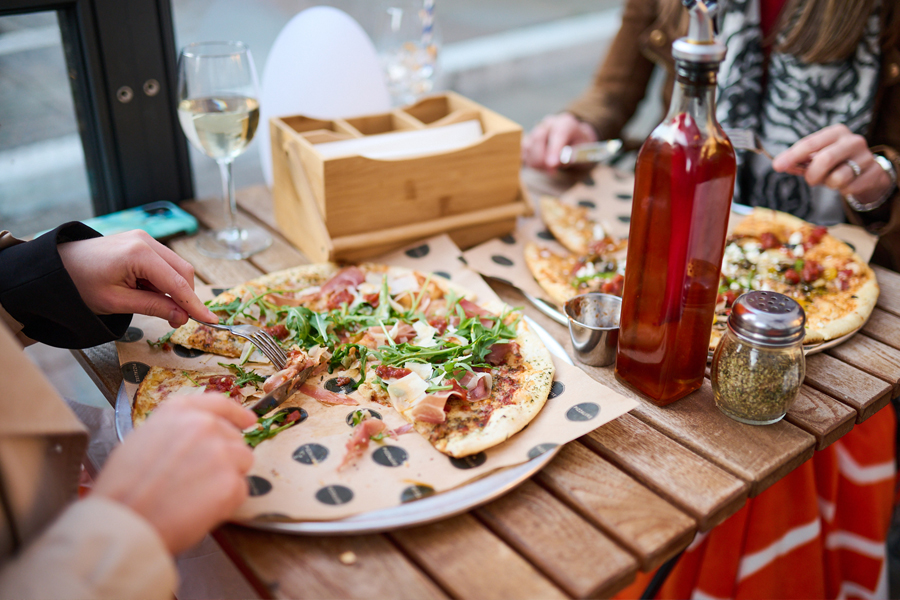The total UK food and drink market is predicted to be worth £315.2bn by 2028, experiencing a growth of 19% from 2023 (£265bn), according to a unique new forecast from IGD.
Merging IGD’s UK retail channel and eating out stats, this is a total picture of the challenges and opportunities across the whole food and drink market over the next five years, including a comparison and breakdown of eating in and eating out.
Predicted growth for the total market is driven largely by inflation, which IGD predicts peaked in March 2023. However, growth is down in real terms across the total landscape, with eating out more impacted as consumers switch to eating at home to save money. In retail, consumers are also trading down to private label and discount options. By 2025, the market is predicted to stabilise, as inflation lowers and household disposable incomes rise.
Short-term view: 2023-2025
This year has seen a switch back from eating out to eating in, as consumers reduce spending. Retail has gone from hypermarkets and supermarkets into discounters, convenience and online, with a down-trade to cheaper products.
Foodservice is experiencing a bigger decline in the short term compared to retail. In 2020, the effect of lockdowns showed a change from eating out to eating in, followed by a bounce back in dining out from 2022. But retail has stolen some ‘share of stomach’ back in 2023, with more routine and impulsive eating out occasions.
Long-term view: 2025-2028
The return to eating out will be counterbalanced by an increase in food-to-go options from retailers, with additional space and range dedicated to food in larger format stores. By 2028, the real value of the industry is predicted to be just shy of pre-pandemic levels, showing the longer-term effects of the pandemic and cost of living crisis.
Next year is predicted to see modest growth of 4.1% in eating out, primarily driven by price increases lagging behind commodity inflation rates. This will, however, be offset by a continuing reduction in visits and down-trading within the sector. The longer-term view sees hospitality volume growth returning from the beginning of 2025, as real wage growth and consumer confidence improves.
Senior analyst and sector expert, Nicola Knight, said: “Eating out will move in line with a household income rise in the mid-term, but there will be an expectation from consumers for great experiences and a high-quality offer. Full service will be at a premium, creating a polarisation in the market between treat occasions and everyday QSR missions.
“The short-term view for restaurants will involve consumers using tactics to manage spending. They will look for fewer or smaller courses, dine out at cheaper alternatives, and seek deals and discounts. Restaurants must work hard to attract customers in the long term, including improvements to value and experience, fighting for loyalty and encouraging people to trade-up on their meals and buy more courses.
“Operators will continue to reduce costs with cheaper ingredients and simpler processes. Businesses that can effectively utilise loyalty scheme data to retain customers will benefit long term, helping the sector maintain its share of the total eating out market. Drive-thrus, fuel station concessions and leisure locations are also popular location strategies for QSRs,” concluded Knight.


